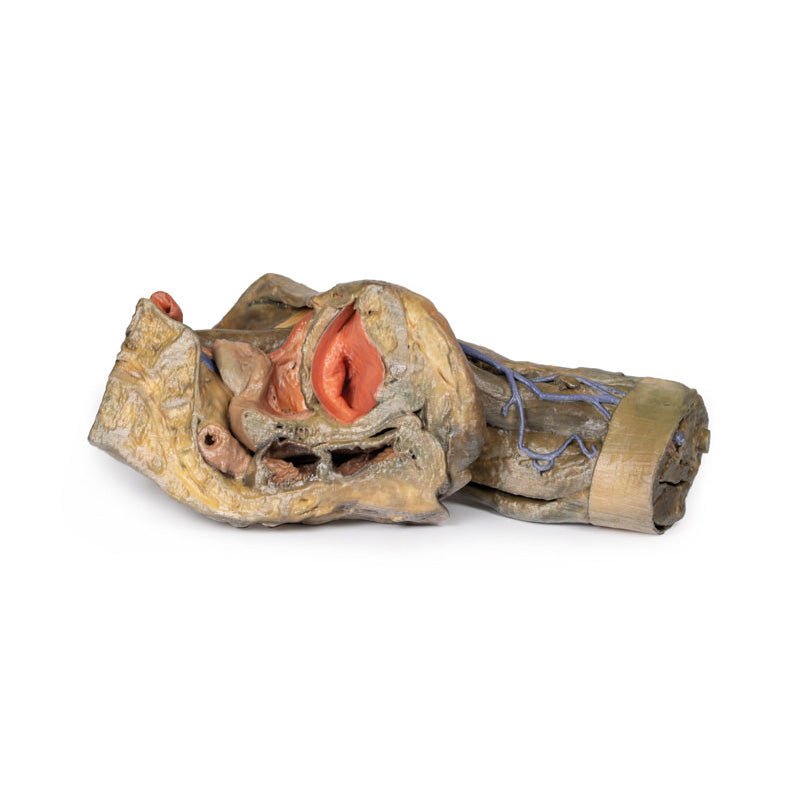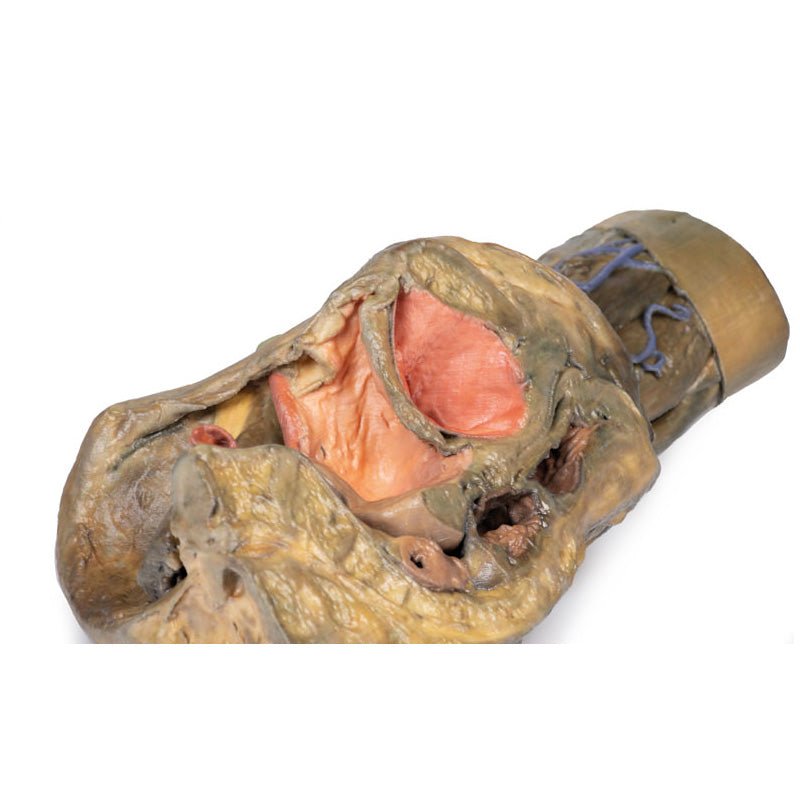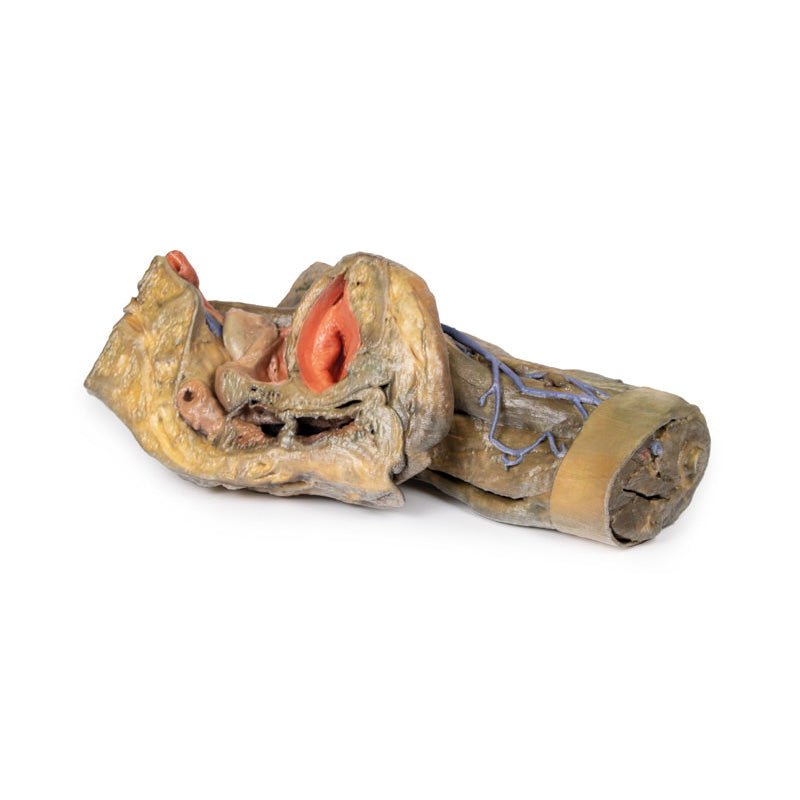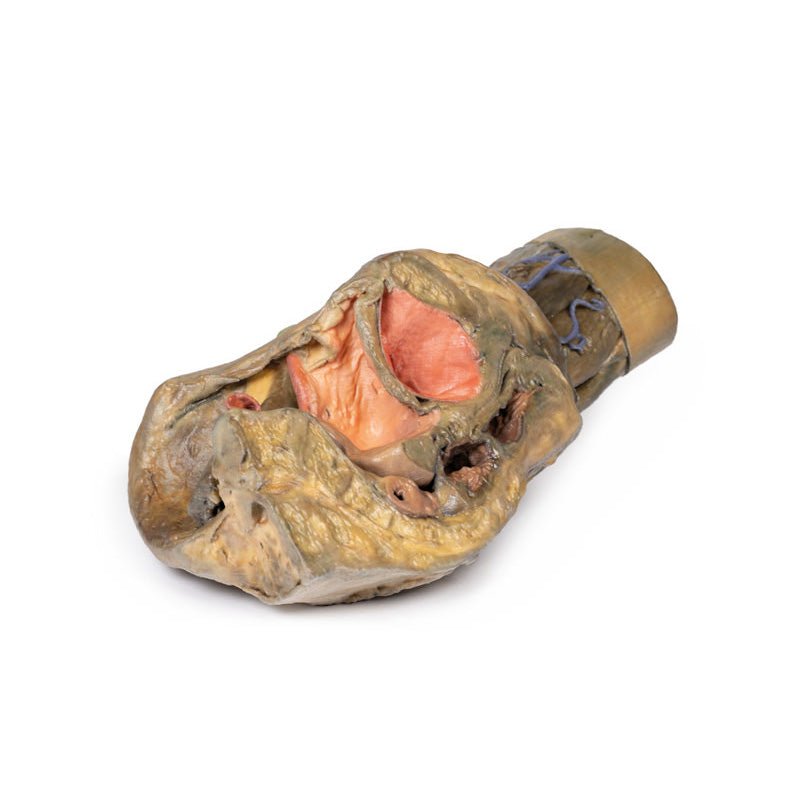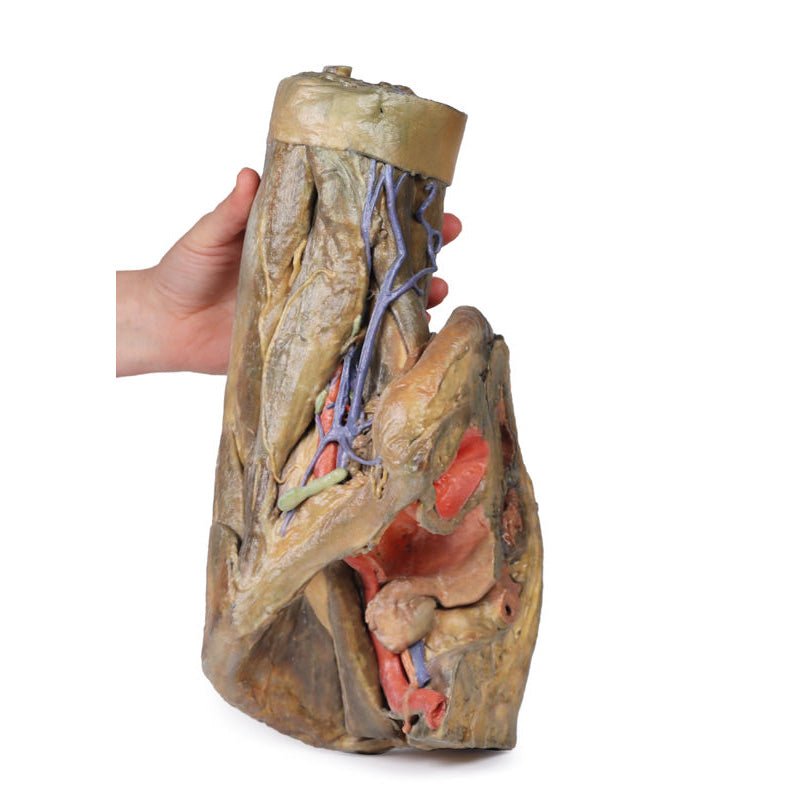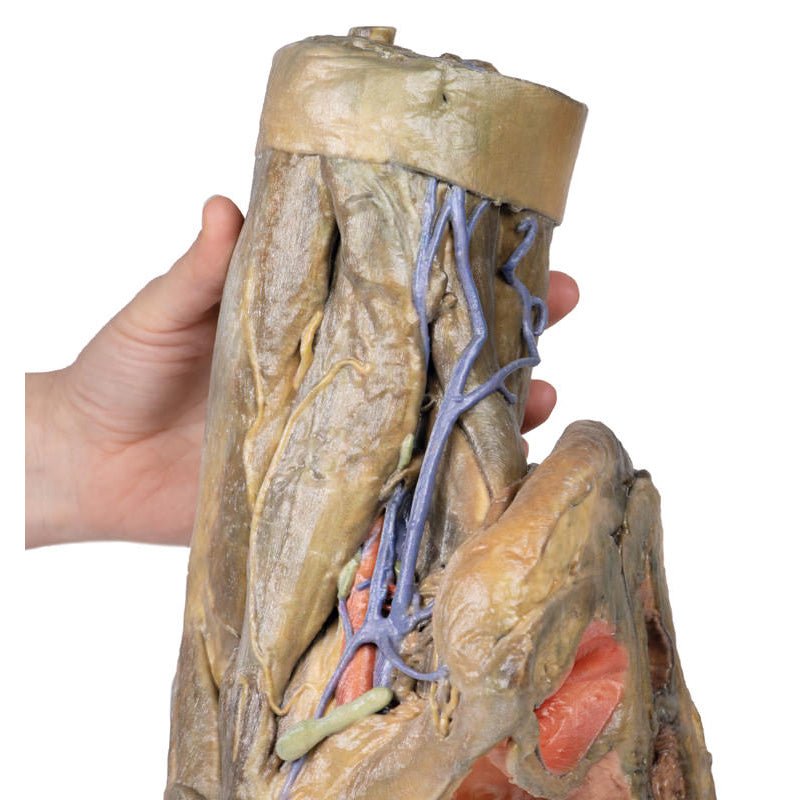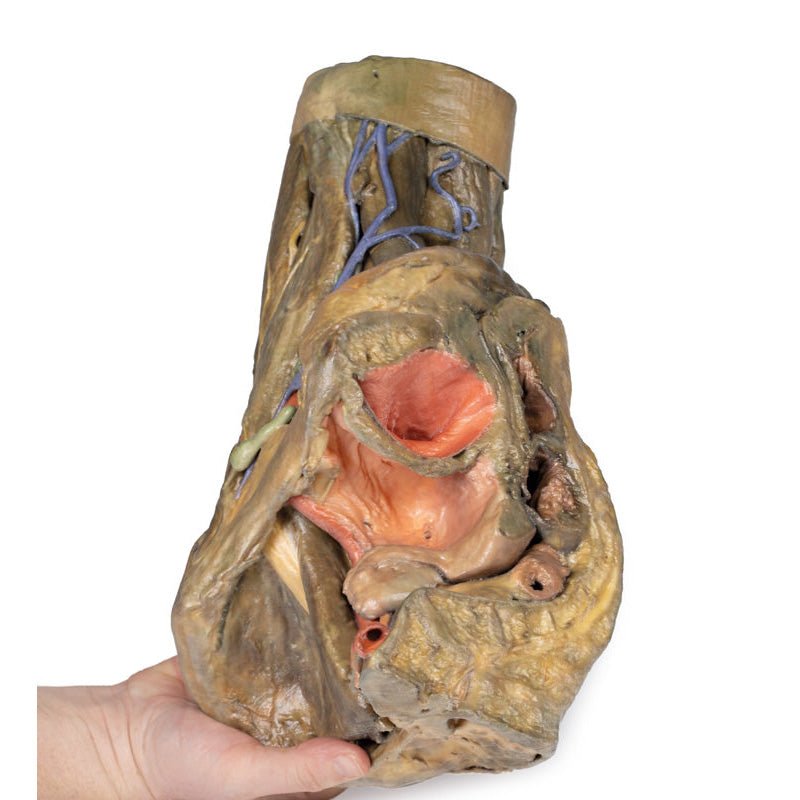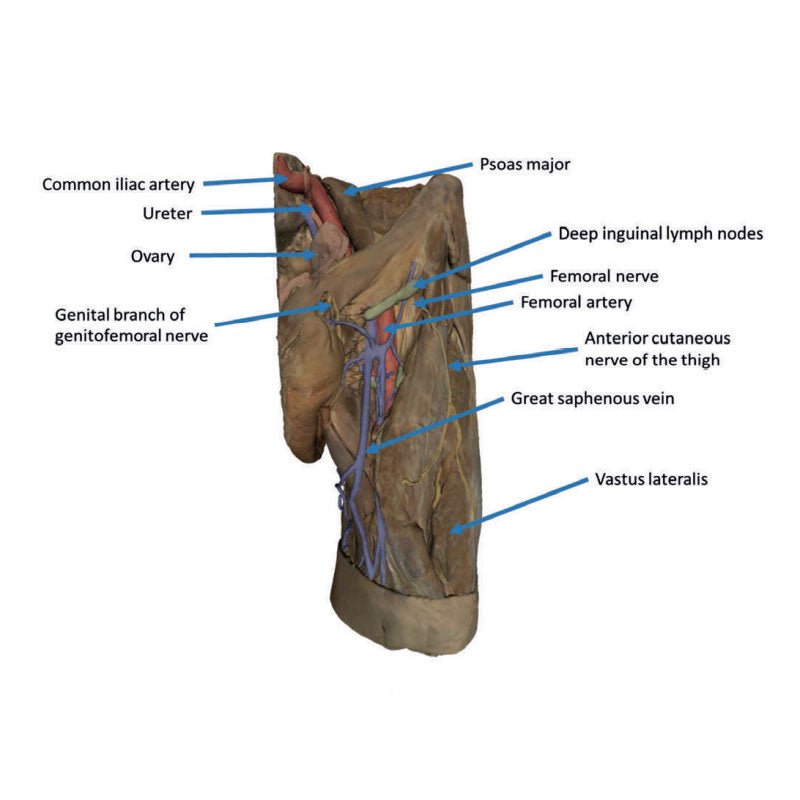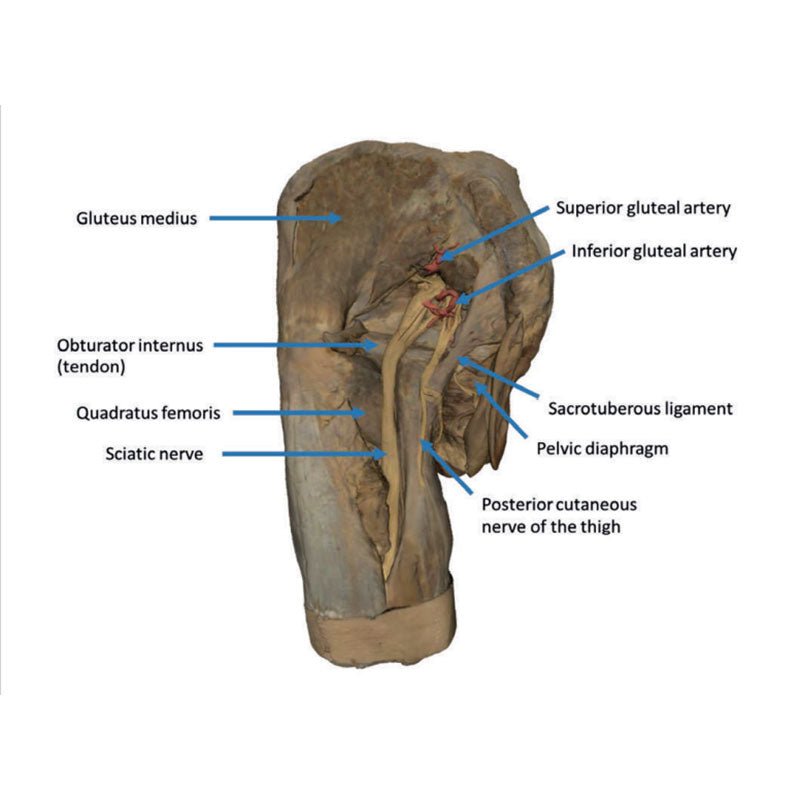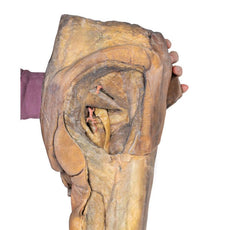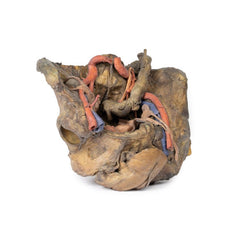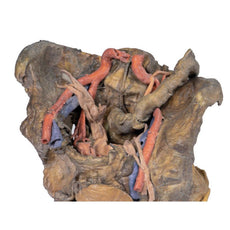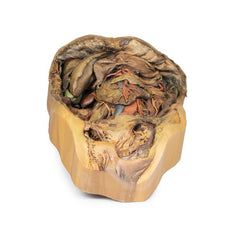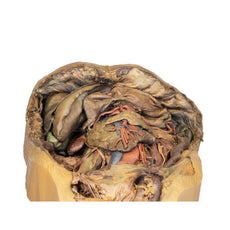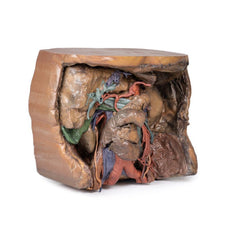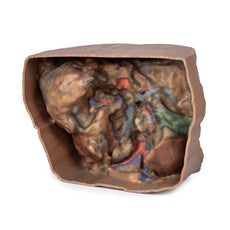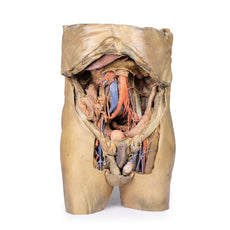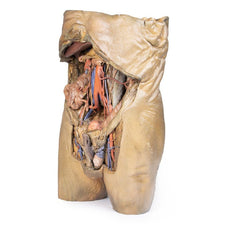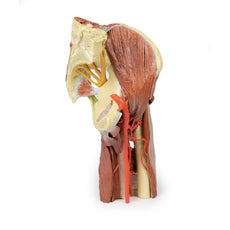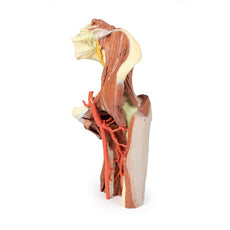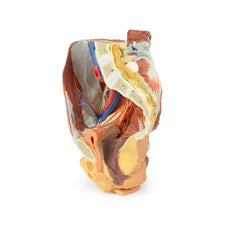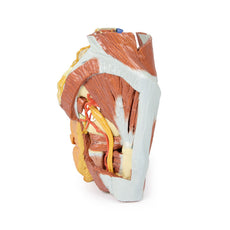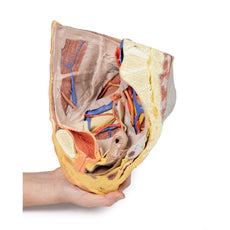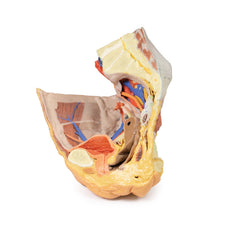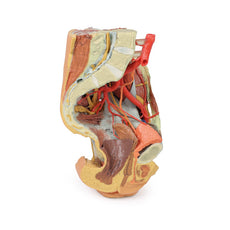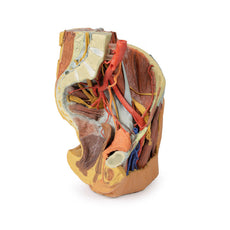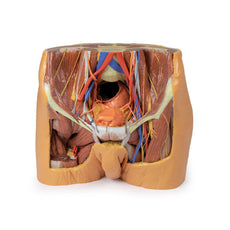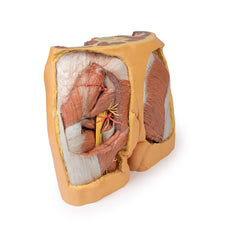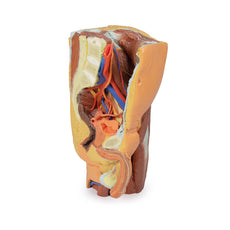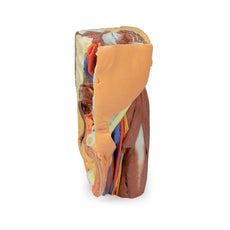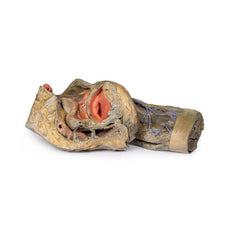Your shopping cart is empty.
3D Printed Female Hemipelvis and Thigh
Item # MP1140Need an estimate?
Click Add To Quote

-
by
A trusted GT partner -
FREE Shipping
U.S. Contiguous States Only -
3D Printed Model
from a real specimen -
Gov't pricing
Available upon request
3D Printed Female Hemipelvis and Thigh
This 3D model preserves a left pelvis divided at the midsagittal plane,
and the proximal thigh to approximately the midthigh.
In the midsagittal section, the urinary bladder, uterus and vagina, and rectum
can be seen in sequence between the pubic symphysis (anteriorly) and the
sacrum (posteriorly). The retention of the peritoneum draped across the superior
surface of these organs allows for view of the vesicouterine and rectouterine
pouches. The reflection of peritoneum off the uterus forms the broad ligament,
with the uterine tube, fimbrae, and closely associated left ovary in position near
the pelvic brim. Lateral to the true pelvis contents the common and external
iliac arteries can be viewed passing towards the subinguinal space between
the common iliac vein and the psoas major muscle. The descending course of
the ureter can be traced across these vessels, and the femoral nerve is visible
between the psoas major and iliacus muscles.
The superficial fascia has been removed across the entire thigh to the lateral
margin of the perineum and near the inferior sectioning of the model itself.
Anteriorly, the femoral triangle region has been dissected to expose the content
as well as the horizontal group of inguinal lymph nodes immediately inferior to
the inguinal ligament. Medially, the femoral vein receives drainage through the
great saphenous vein and regional veins (including the superficial circumflex
iliac, the superficial external pudendal, and the deep pudendal veins). The
femoral artery can be seen immediately lateral to the vein, with parts of the
femoral nerve descending just lateral to the artery and near the tendon of the
iliopsoas muscle. Although somewhat disturbed by dissection, the anterior
cutaneous nerves of the thigh and a small part of the lateral cutaneous nerve of
the thigh can be seen on the superficial aspect of the sartorius muscle.
Posteriorly, the gluteal region has been dissected with
removal of the gluteus maximus to expose the
underlying gluteal muscles, with reflection of the
piriformis muscle revealing the neurovascular
structures in the region. The sciatic nerve can be
seen forming through contributions by the tibial
and common peroneal nerves around the preserved
portions of the superior and inferior gluteal arteries.
Medially the posterior cutaneous nerve of the thigh runs
in parallel with the sciatic nerve, with both resting on the
obturator internus tendon and gemelli muscles before
descending into the thigh on top of the quadratus
femoris and common hamstring origin, respectively.
Deep to the sacrotuberous ligament the course of
the internal pudendal artery and pudendal nerve
can be followed towards the ischioanal fossa,
where the internal pudendal artery arcs anteriorly
and the inferior rectal branch of the pudendal nerve
can be seen reaching the pelvic diaphragm and
external anal sphincter muscle.
 Handling Guidelines for 3D Printed Models
Handling Guidelines for 3D Printed Models
GTSimulators by Global Technologies
Erler Zimmer Authorized Dealer
The models are very detailed and delicate. With normal production machines you cannot realize such details like shown in these models.
The printer used is a color-plastic printer. This is the most suitable printer for these models.
The plastic material is already the best and most suitable material for these prints. (The other option would be a kind of gypsum, but this is way more fragile. You even cannot get them out of the printer without breaking them).The huge advantage of the prints is that they are very realistic as the data is coming from real human specimen. Nothing is shaped or stylized.
The users have to handle these prints with utmost care. They are not made for touching or bending any thin nerves, arteries, vessels etc. The 3D printed models should sit on a table and just rotated at the table.




